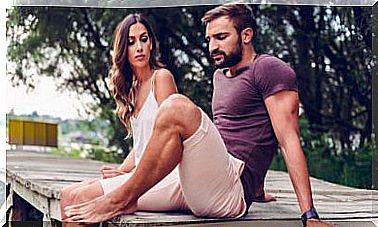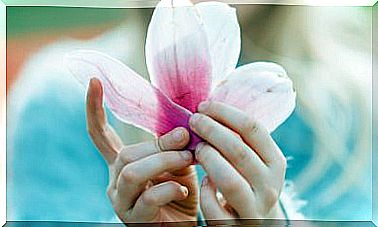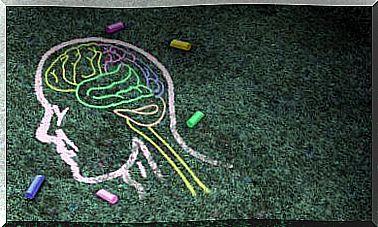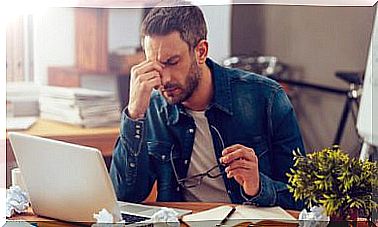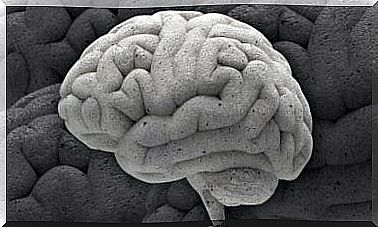Use Both Hands To Activate The Brain
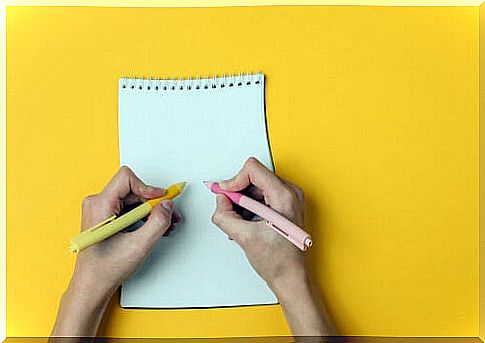
Human beings are born with a specific brain organization. Throughout our early years, laterality develops and, by age seven, the dominance of one of the hemispheres seems to have settled.
From that moment on, we use our right hand (in case of being right-handed) or left (in case of being left-handed) as a priority. However, using both hands in our daily activities can help stimulate the brain.
Although it is essential to allow natural laterality to develop without intervening, once established we can obtain benefits from exercising both hands. If you want to know what these advantages are and how to implement them, in this article we will tell you.

Laterality
Laterality is defined as the systematic tendency to use one of the two symmetrical sides of the body and one of the even organs (hands, eyes, legs…). Most of the population shows a preference for using the right side of the body, while around 10% use the left as a priority.
Each half of our body (and its motor functions) are directed by the opposite cerebral hemisphere. Therefore, right-handers show dominance of the left hemisphere while left-handers show the opposite.
In this way, when we exercise one of the halves of our body much more frequently, the other is in disuse and does not develop the same ability. But, in addition, this leads to a great brain specialization of functions, in which one cerebral hemisphere is stimulated much more actively and frequently than the other.
It is important to allow functional laterality to develop naturally (it is not advisable to force a child to use the opposite hand, as it can lead to problems of various kinds). However, ambidextrousness (learning to use both hands skillfully) can bring both physical and brain benefits.
Benefits of using both hands
Being ambidextrous improves symmetry in movements and athletic performance, which is why it has obvious advantages for those who practice sports or dance.
At the level of ergonomics and comfort, being able to distribute the workload between both body halves is also beneficial. But not only that, starting to use the non-dominant hand can help us develop and stimulate our brain capacities.
The left hemisphere seems to be more related to the control of analytical functions. while the law is more related to creativity. In this way, by starting to use the opposite hand frequently, a right-hander could enhance his imaginative side while a left-hander could stimulate his logical abilities.
This greater functionality and coordination between the two hemispheres may be especially important in case of brain injury. An ambidextrous person will have more distributed dexterity, so that, a priori, damage in one of the hemispheres would cause fewer limitations.
Thus, when brain injury occurs, brain reorganization is essential, but it is not necessary to wait for such a drastic situation to begin to enhance our flexibility and capabilities.

Try something different
To gain control over the non-dominant hand, the brain has to create new neural connections. These will be the ones that will bring about the changes and will give you a new approach, awakening or enhancing skills that were not in use. To achieve this it is not necessary to make very drastic changes. Examples would be:
- Acquiring good skill with your non-dominant hand takes time and practice. Do not implement exercises where performance is very important. Also, do not train in moments of anxiety, since failures can increase it exponentially.
- Make small adaptations. If you generally open doors, close drawers, or lower blinds with your right hand, try using your left.
- Little by little, practice more complex tasks. You can train yourself to catch silverware, shower, or wash dishes with your non-dominant hand. Nail painting is also a good bilateral exercise.
Be consistent and patient. Think that you are learning new skills, just like a child would. Therefore, the results will come with practice.
He thinks that, although this is gradual, the progress is not. The normal thing is that with little “training” you see more or less outstanding results. However, as you gain skill, the earning process will also slow down.
Think that if your dominant hand “has been doing it all for decades”, the other will take time to reach the level. Practice is the key.




